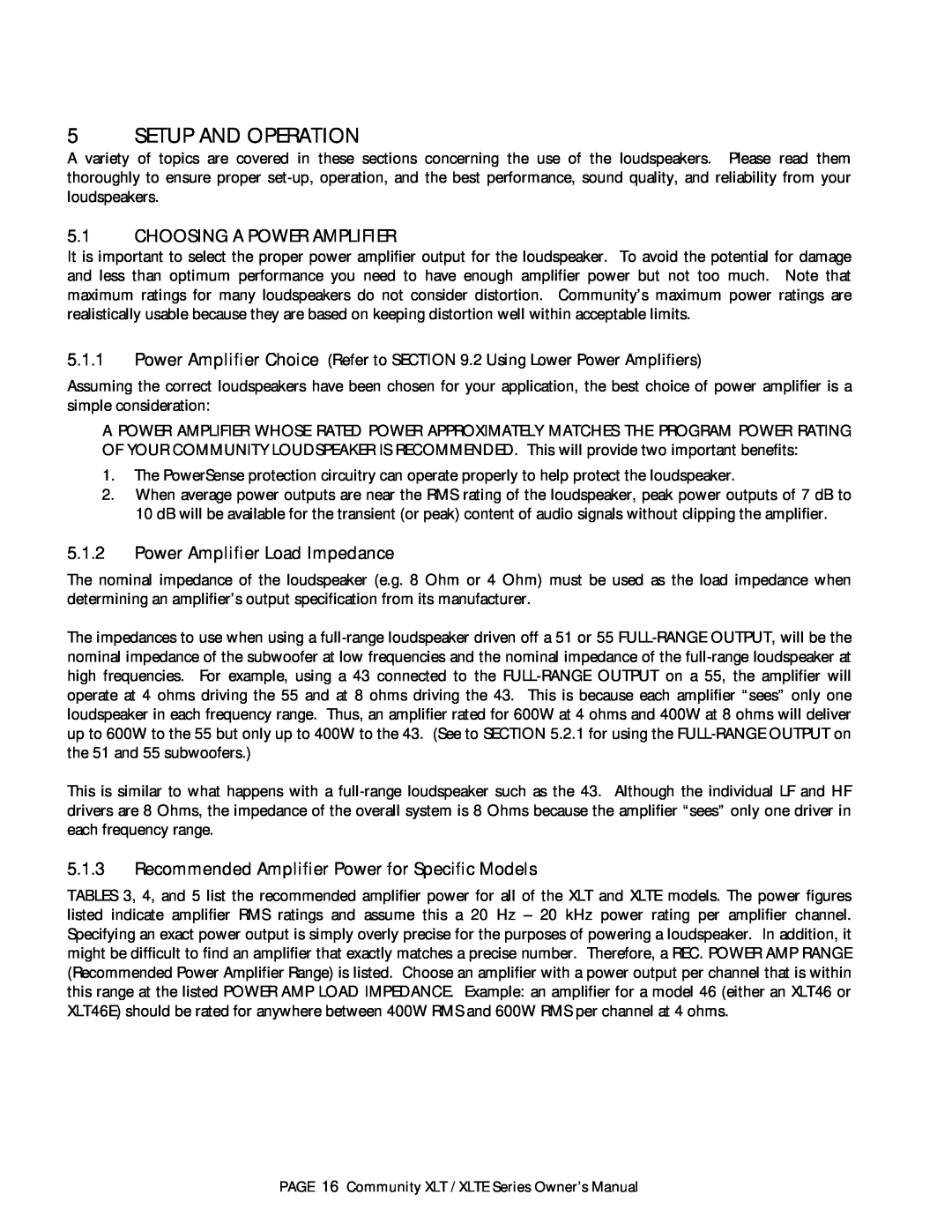5 SETUP AND OPERATION
A variety of topics are covered in these sections concerning the use of the loudspeakers. Please read them thoroughly to ensure proper
5.1CHOOSING A POWER AMPLIFIER
It is important to select the proper power amplifier output for the loudspeaker. To avoid the potential for damage and less than optimum performance you need to have enough amplifier power but not too much. Note that maximum ratings for many loudspeakers do not consider distortion. Community’s maximum power ratings are realistically usable because they are based on keeping distortion well within acceptable limits.
5.1.1Power Amplifier Choice (Refer to SECTION 9.2 Using Lower Power Amplifiers)
Assuming the correct loudspeakers have been chosen for your application, the best choice of power amplifier is a simple consideration:
A POWER AMPLIFIER WHOSE RATED POWER APPROXIMATELY MATCHES THE PROGRAM POWER RATING OF YOUR COMMUNITY LOUDSPEAKER IS RECOMMENDED. This will provide two important benefits:
1.The PowerSense protection circuitry can operate properly to help protect the loudspeaker.
2.When average power outputs are near the RMS rating of the loudspeaker, peak power outputs of 7 dB to 10 dB will be available for the transient (or peak) content of audio signals without clipping the amplifier.
5.1.2Power Amplifier Load Impedance
The nominal impedance of the loudspeaker (e.g. 8 Ohm or 4 Ohm) must be used as the load impedance when determining an amplifier’s output specification from its manufacturer.
The impedances to use when using a
This is similar to what happens with a
5.1.3Recommended Amplifier Power for Specific Models
TABLES 3, 4, and 5 list the recommended amplifier power for all of the XLT and XLTE models. The power figures listed indicate amplifier RMS ratings and assume this a 20 Hz – 20 kHz power rating per amplifier channel. Specifying an exact power output is simply overly precise for the purposes of powering a loudspeaker. In addition, it might be difficult to find an amplifier that exactly matches a precise number. Therefore, a REC. POWER AMP RANGE (Recommended Power Amplifier Range) is listed. Choose an amplifier with a power output per channel that is within this range at the listed POWER AMP LOAD IMPEDANCE. Example: an amplifier for a model 46 (either an XLT46 or XLT46E) should be rated for anywhere between 400W RMS and 600W RMS per channel at 4 ohms.
PAGE 16 Community XLT / XLTE Series Owner’s Manual
